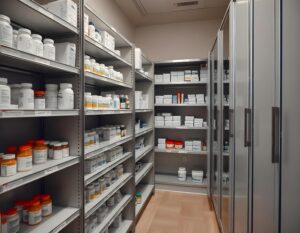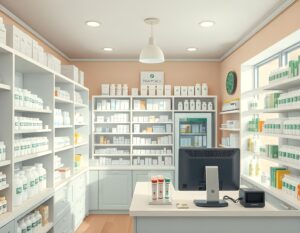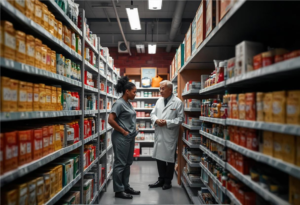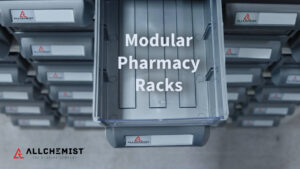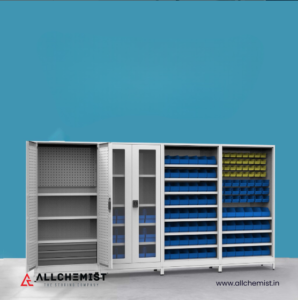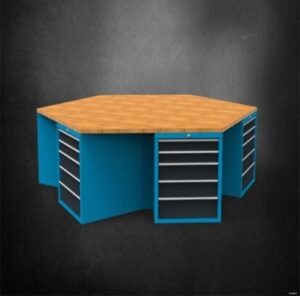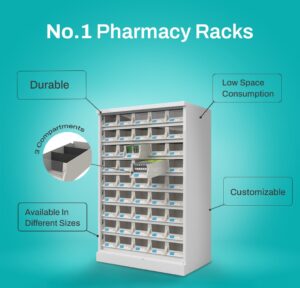Pharmacy racks form the backbone of medication management, ensuring operational efficiency, regulatory compliance, and patient safety. While hospitals and retail pharmacies both rely on storage systems, their needs diverge dramatically due to distinct workflows, security demands, and space constraints. Allchemist’s modular pharmacy racks address these unique requirements with tailored designs—from high-capacity hospital systems to customer-facing retail displays. This blog explores five critical differences between these environments and how specialized storage solutions optimize outcomes.
1. Purpose and Workflow Differences
Hospital Pharmacies: Critical Care Coordination
Hospital pharmacies support inpatient care, requiring bulk storage for IV fluids, antibiotics, and emergency drugs. Their workflows integrate with electronic health records (EHRs) to track real-time medication usage, ensuring rapid restocking during crises. Vertical carousels and automated retrieval systems reduce retrieval times by 40%, while centralized racks near ICUs and surgical units streamline coordination across departments.
Retail Pharmacies: Customer-Centric Accessibility
Retailers prioritize visual merchandising and fast access for walk-in customers. Slanted glass shelves and open-front designs enhance product visibility, reducing customer wait times by 22%. POS-linked inventory systems automate reorders during peak hours, while compact layouts maximize floor space for OTC products and seasonal displays.
Workflow Impact:
- Hospitals use closed-loop systems with EHR integration for real-time tracking.
- Retailers deploy modular front counters to balance security and customer interaction.
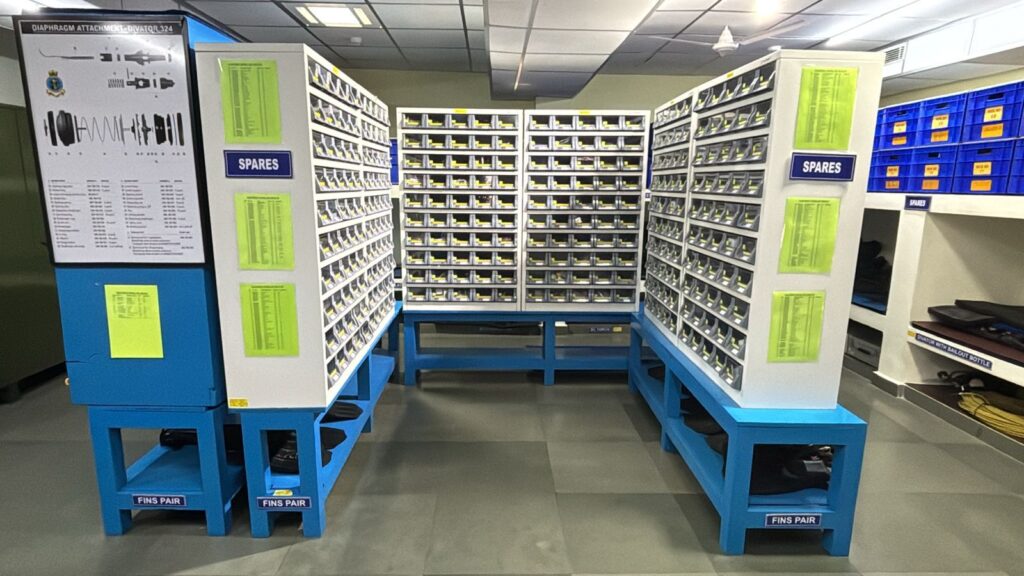
2. Storage Capacity and Rack Configuration
Hospitals: High-Density Critical Care Storage
Allchemist’s hospital racks feature:
- 600–800 mm deep shelves for IV bags and multi-dose vials.
- Vertical carousels with 150 kg/shelf capacity for high-turnover antibiotics.
- Emergency compartments with rapid-access doors for code carts.
Retail: Space-Efficient Merchandising
Retail configurations prioritize:
- Slant racks (300–500 mm depth) for OTC self-service.
- Adjustable dividers to accommodate diverse SKUs.
- Lockable front counters for Schedule H drugs.
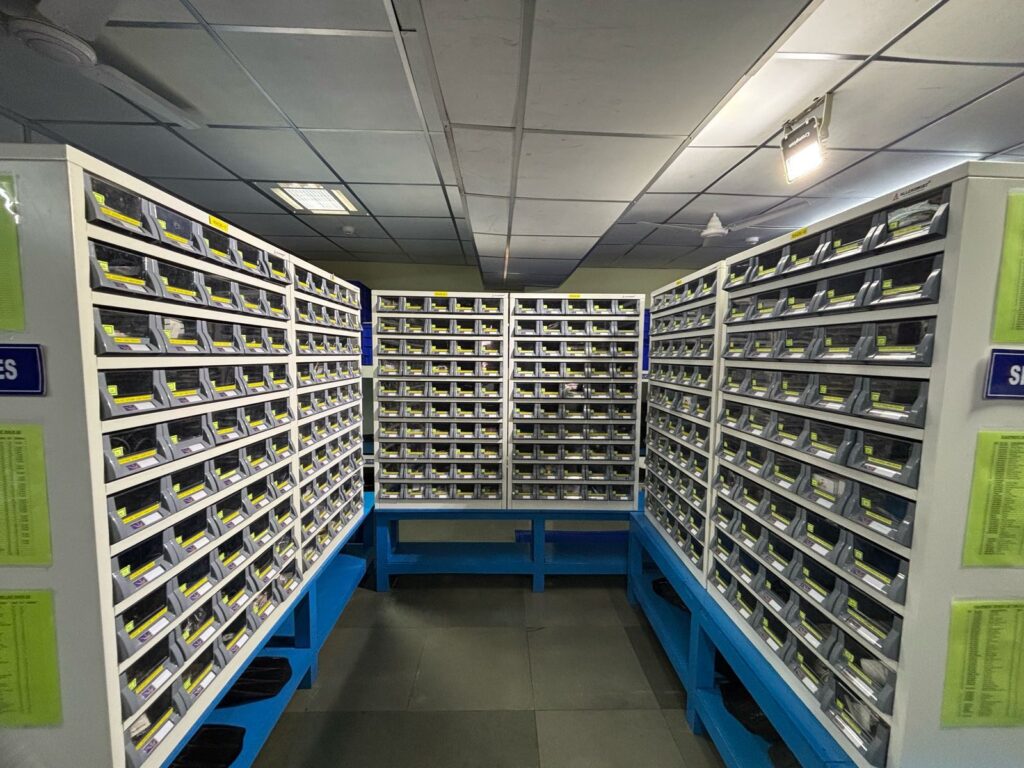
3. Security and Compliance Requirements
Hospitals: Biometric Access and Temperature Control
- DEA-compliant narcotic cabinets with biometric locks and audit trails.
- Temperature-controlled units (±2°C accuracy) for vaccines.
- Separate zones for opioids and cytotoxic drugs to prevent diversion.
Retail: Strategic Deterrence
- Standard locks for Schedule H drugs behind counters.
- Open shelving for high-margin OTC items at eye level.
- Compliance with local display regulations to avoid overcrowding.
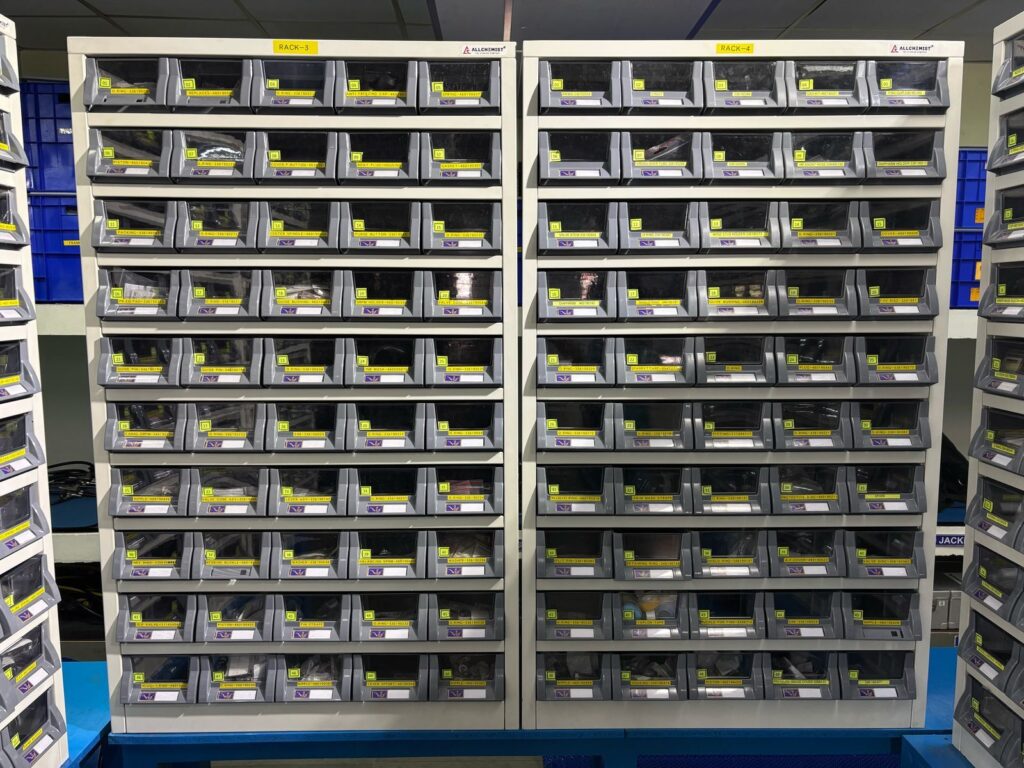
4. Customization and Flexibility
Hospitals: Adapting to Medical Protocols
- Mobile units with braked casters for disaster response.
- Interchangeable modules for pediatric or oncology wards.
- Adjustable shelving for new biologics or infusion pumps.
Retail: Dynamic Displays
- Convertible shelving for flu shot promotions.
- LED-lit endcaps for seasonal discounts.
- Modular counters transitioning from OTC to prescription pickup.

5. Integration with Inventory Systems
Hospitals: EHR-Driven Automation
- Real-time restocking based on ICU usage data
- Barcode scanners reducing errors by 60%
- Automated compliance reports for DEA audits
Retail: POS-Linked Efficiency
- Automatic reorders triggered by stock thresholds
- Dynamic pricing updates during regulatory changes
- Expiration alerts reducing waste by 18%

Conclusion: Tailored Solutions for Optimal Outcomes
Hospitals and retail pharmacies demand specialized storage systems:
- Hospitals require high-density, secure racks with EHR integration.
- Retailers thrive on flexible, space-efficient displays linked to POS systems.
Allchemist’s modular designs—from biometric narcotic cabinets to sliding glass displays—address these needs while ensuring compliance and efficiency.
“Ready to transform your pharmacy’s storage? Explore Allchemist’s customizable racks for hospitals and retailers.







